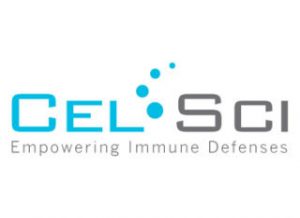
Cancer Cell Art
As the name implies, head and neck cancer is a group of cancers that starts within the mouth, nose, throat, larynx, sinuses or salivary glands. Head and neck cancers are the sixth most common group of cancers in the world and oftentimes considered preventable because making certain lifestyle changes significantly lowers a person’s risk. About 2/3 of the patients have advanced primary disease at diagnosis (i.e., they have advanced disease which has never been treated at the time of diagnosis).
An estimated 61,760 new cases of head and neck cancers will be diagnosed in the U.S. in 2017, with over 13,190 deaths expected to result from the diagnosis. Head and neck cancers account for 3% of all cancers in the U.S. Men are two to three times more likely than women to develop a head or neck cancer because of their greater use of tobacco and alcohol. However, head and neck cancers found in women have been rising for several years.
The consumption of tobacco (including cigarettes, cigars, pipes, and smokeless tobacco) and alcohol are the most common causes of head and neck cancers.
Other risk factors for head and neck cancers may include poor oral hygiene, exposure to occupational inhalants (such as asbestos or wood dust), a diet low in vegetables and fruits, gastroesophageal reflux disease, infection with the human papilloma virus (HPV) or Epstein-Barr virus and a weakened immune system. The clinical outcome following current standard of care (SOC) treatment for advanced primary SCC patients is generally very poor, and their prognosis dire. The 3-5 year overall survival for these patients is estimated to be less than 50%. These patients, therefore, have a clear unmet medical need. An Orphan Drug Designation for Multikine for the treatment of patients with advanced primary squamous cell carcinoma of the head and neck was granted by US FDA.
Diagnosis
Diagnosing a head and neck cancer includes one or more of the following tests:
Exam. First, the doctor or nurse will take a complete medical history, noting all symptoms and risk factors. The doctor will thoroughly examine the head and neck area, feeling for abnormalities, looking at the inside of the mouth and throat, and using mirrors and lights to examine hard-to-see areas.
Endoscopy. In some cases, the doctor may use a flexible, lighted tube called an endoscope to examine areas of the head and neck that are less accessible. This tube may be inserted through the nose or mouth, using a topical anesthetic (a medication applied directly to the nose and throat) to make the examination more comfortable.
Imaging Tests. Imaging tests such as CT, MRI, or ultrasound may be required to gain more information about the location and extent of the tumor.
Biopsy. A biopsy involves removing a small amount of tissue or fluid for examination under a microscope.
Treatment
The three main types of treatment for managing head and neck cancer are radiation therapy, surgery, and chemotherapy. The primary treatments are radiation therapy, surgery, or both combined; chemotherapy is often used as an additional, or adjuvant, treatment. The optimal combination of the three treatment modalities for a patient with a particular head and neck cancer depends on the site of the cancer and the stage (extent) of the disease.
Radiation therapy. Radiation therapy is the most common form of treatment. There are different forms of radiation therapy, including 3D conformal radiation therapy, intensity-modulated radiation therapy, particle beam therapy and brachytherapy, which are commonly used in the treatments of cancers of the head and neck. Most people with head and neck cancer who are treated in the United States and Europe are treated with intensity-modulated radiation therapy using high energy photons. At higher doses, head and neck radiation is associated with thyroid dysfunction and pituitary axis dysfunction.
Chemotherapy. Chemotherapy in throat cancer is not generally used to cure the cancer as such. Instead, it is used to provide an inhospitable environment for metastases so that they will not establish in other parts of the body. Typical chemotherapy agents are a combination of paclitaxel and carboplatin. Cetuximab is also used in the treatment of throat cancer. Docetaxel-based chemotherapy has shown a very good response in locally advanced head and neck cancer. Docetaxel is the only taxane approved by US FDA for head and neck cancer, in combination with cisplatin and fluorouracil for the induction treatment of inoperable, locally advanced squamous cell carcinoma of the head and neck. While not specifically a chemotherapy, amifostine is often administered intravenously by a chemotherapy clinic prior to IMRT radiotherapy sessions. Amifostine protects the gums and salivary glands from the effects of radiation.
Surgery. Surgery as a treatment is frequently used in most types of head and neck cancer. Usually the goal is to remove the cancerous cells entirely. This can be particularly tricky if the cancer is near the larynx and can result in the person being unable to speak. Surgery is also commonly used to resect (remove) some or all of the cervical lymph nodes to prevent further spread of the disease. CO2 laser surgery is also another form of treatment. Transoral laser microsurgery allows surgeons to remove tumors from the voice box with no external incisions. It also allows access to tumors that are not reachable with robotic surgery. During the surgery, surgeon and pathologist work together to assess the adequacy of excision (“margin status”), minimizing the amount of normal tissue removed or damaged. This technique helps give the person as much speech and swallowing function as possible after surgery.
Photodynamic therapy. Photodynamic therapy may have promise in treating mucosal dysplasia and small head and neck tumors. Amphinex is giving good results in early clinical trials for treatment of advanced head and neck cancer.
Diagnostics Companies
These companies are candidates for membership of the Cancer consortium.
 Travera: Travera is using a breakthrough technology to measure which cancer drugs work against each individual’s unique cancer. This revolutionary diagnostic test will enable oncologists to quickly determine which drugs to prescribe based on the actual responses of their patients’ tumor cells
Travera: Travera is using a breakthrough technology to measure which cancer drugs work against each individual’s unique cancer. This revolutionary diagnostic test will enable oncologists to quickly determine which drugs to prescribe based on the actual responses of their patients’ tumor cells
Vigilant Biosciences: Vigilant’s focus is on the development of a low-cost, innovative, selective adjunctive screening for oral cancer.
Biomarker Strategies: Recently announced Phase I National Cancer Institute Grant to Develop Companion Diagnostic to Identify Patients with Head and Neck Cancer Who Are Most Likely to Respond to Treatment with Cetuximab.
AdDent Inc: With cutting-edge technology and an unparalleled dedication to advancing dentistry, the latest product is Bio/Screen, a life saving technology for oral cancer screening.
Bio and Pharma Therapeutics Companies
These companies are candidates for membership of the Cancer consortium.
 Soligenix, Inc: (NASDAQ: SNGX) Soligenix is a late-stage biopharmaceutical company developing products to treat life-threatening side effects of oral mucositis for cancer treatments. Soligenix is conducting a multi-center, double-blind, placebo-controlled Phase III clinical study of SGX942, its lead clinical Innate Defense Regulator candidate, which contains the active ingredient dusquetide. The company is focusing the clinical trials on oral mucositis in head and neck cancer patients. Based on promising results from Phases I and II, SGX942 has been awarded Fast Track designation from the FDA for the treatment of oral mucositis as a result of radiation and/or chemotherapy treatment in head and neck cancer patients.
Soligenix, Inc: (NASDAQ: SNGX) Soligenix is a late-stage biopharmaceutical company developing products to treat life-threatening side effects of oral mucositis for cancer treatments. Soligenix is conducting a multi-center, double-blind, placebo-controlled Phase III clinical study of SGX942, its lead clinical Innate Defense Regulator candidate, which contains the active ingredient dusquetide. The company is focusing the clinical trials on oral mucositis in head and neck cancer patients. Based on promising results from Phases I and II, SGX942 has been awarded Fast Track designation from the FDA for the treatment of oral mucositis as a result of radiation and/or chemotherapy treatment in head and neck cancer patients.
 CEL-SCI Corporation (NYSE: CVM) is developing immunotherapy products for the treatment of cancer and infectious diseases, based on the premise of boosting patients’ immune systems while they are still intact. CEL-SCI’s lead investigational immunotherapy Multikine®treats patients who are newly diagnosed with head and neck cancer before they have undergone surgery, radiation, or chemotherapy. Multikine® has received an Orphan Drug designation from the FDA for treatment of head and neck cancer patients with advanced squamous cell carcinoma. They are well into the largest phase 3 cancer trial.
CEL-SCI Corporation (NYSE: CVM) is developing immunotherapy products for the treatment of cancer and infectious diseases, based on the premise of boosting patients’ immune systems while they are still intact. CEL-SCI’s lead investigational immunotherapy Multikine®treats patients who are newly diagnosed with head and neck cancer before they have undergone surgery, radiation, or chemotherapy. Multikine® has received an Orphan Drug designation from the FDA for treatment of head and neck cancer patients with advanced squamous cell carcinoma. They are well into the largest phase 3 cancer trial.
CytRx Corporation (NASDAQ: CYTR) At the recent Annual Meeting of the American Association for Cancer Research, CytRx presented statistically significant breakthrough data for its albumin-binding ultra-high-potency LADR™ drug candidates. CytRx’s LADR™ compounds demonstrate excellent long-term anti-tumor activity for head and neck cancers.
Isoray Medical, Inc: An innovative company that designs and develops state-of-the-art, personalized brachytherapy products that provide a more cost-effective cancer treatment.
Oragenics (OGEN): Oragenics is focused on becoming a leader in novel antibiotics against infectious disease and on developing effective treatments for oral mucositis.
Monopar Therapeutics: is an emerging biopharmaceutical company focused on developing innovative drugs and drug combinations to improve clinical outcomes for cancer patients.
Viventia Biotech: Viventia Biotech Inc. is a private biopharmaceutical company developing anti-cancer drugs that combine the potency of traditional cancer therapies with the precision of tumor-targeting monoclonal antibodies.
Aduro Biotech: The company is advancing several leading-edge proprietary technologies that are designed to initiate and sustain the immune system to mobilize and attack tumors.
Immunomedics Inc: Immunomedics is deeply committed to becoming the leading antibody drug conjugate (ADC) company worldwide, delivering breakthrough therapies to treat complex cancers and transform patient outcomes.
Innate Pharma: Innate Pharma specializes in immuno-oncology, a new therapeutic field that is changing cancer treatment by mobilizing the power of the body’s immune system to recognize and kill cancer cells.
Oncolytics Biotech: Oncolytics Biotech Inc. is developing an intravenously delivered immuno-oncolytic virus called REOLYSIN, for the treatment of solid tumors and hematological malignancies.
Organizations/Resources
Support for People with Oral and Head and Neck Cancer (SPOHNC) is a nonprofit organization involved in the development of programs of support. As such it can have an enormous positive impact on meeting the psychosocial needs of patients as well as preserving, restoring and promoting physical and emotional health. https://www.spohnc.org/
Head and Neck Cancer Alliance‘s mission is to advance prevention, detection, treatment and rehabilitation of oral, head and neck cancers through public awareness, research, advocacy and survivorship. https://www.headandneck.org/
American Head and Neck Society: Advance Education, Research and Quality of Care for the head and neck oncology patient. https://www.ahns.info/
Support for People with Oral and Head and Neck Cancer (SPOHNC) is a patient-directed, 501(c)(3), non-profit organization dedicated to addressing the broad emotional, physical, and humanistic needs of oral, head, and neck cancer patients. https://www.spohnc.org/
HNC Support International: Our goal is to help you by providing patient-to-patient communication on these and other subjects. https://www.hncsupport.org/

